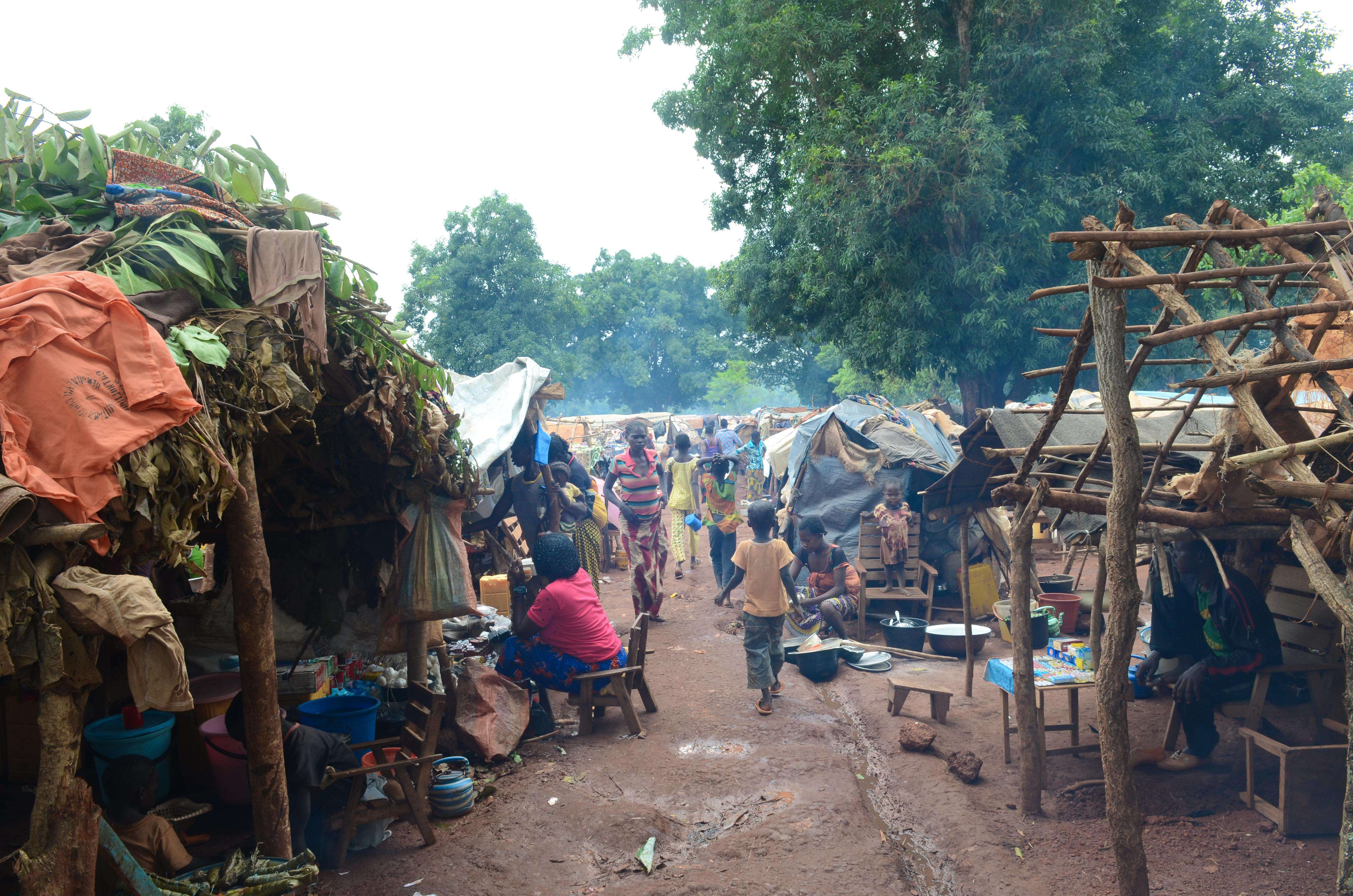Thomas sits in a hospital ward in the Central African Republic (CAR) town of Bria. All his fingers on both hands have been amputated, his left arm is broken, and an external fixator supports one of his legs where machete blows cut through his thigh almost to the bone.
"It was 8:00 in the morning on Tuesday, May 16," he recalls. "I was home with my family, and friends [were] staying with us. [Armed men] forced their way in with machetes and clubs. They pushed the women out and beat us up. They said we were anti-balaka [a primarily Christian militia group], but I’ve been a safari guide for almost 40 years." Thomas, who is in his sixties, is just one of the victims of the fighting that shook Bria last month from May 15 to 18. What happened in this town—called “sparkling Bria” because of the region’s numerous diamond mines—is no anomaly in CAR, where fighting between various opposing armed groups is increasingly accompanied by attacks against civilians.
A Complex Web of Alliances
Bria, which has a population of around 47,000 people, is currently controlled by different armed groups divided in part along religious and ethnic lines. For example, the town’s mainly Muslim neighborhood is home to fighters from the Muslim Popular Front for the Renaissance in the Central African Republic (FPRC) and Union for Peace in the Central African Republic (UPC). (The UPC are sometimes called "Arabs" in order to distinguish them from another mostly Muslim faction known as UPC Peuhl.) In Christian neighborhoods, so-called "self-defense" forces have also been set up.
In May, this complex web of alliances and misalliances exploded when Christian neighborhoods were targeted in part of a continuing cycle of violence. Before that, Muslim Peuhl communities were attacked in November 2016 and March 2017. Since then, more than 2,800 Peuhl people have sought refuge in Bria’s Gobolo enclave, which is currently under the protection of United Nations peacekeeping forces.
These attacks are part of a worrying trend in CAR: it appears that there is no longer much distinction between civilians and combatants. Local people, only too aware of this reality, now flee their homes at the first opportunity. In Bria, whole neighborhoods have been emptied of their inhabitants. Deserted houses bear traces of the fighting: bullet holes, walls blackened by fire, roofs destroyed.
"I’ve nowhere to go home to," continues Thomas. "Everything’s been destroyed or looted. All the gifts my European customers gave me to thank me for my services as their guide have been stolen. I’ve lost everything. My family and I have found refuge for now in the hospital, but if we have to leave, we’ll go into the forest. We’re not going back to our neighborhood." Like Thomas and his family, around 6,000 people prefer to sleep overnight in the hospital compound, where hospital staff live among the displaced and their market stalls.
Mass Displacement
Around 41,000 people—over 85 percent of Bria’s population—have fled their homes due to fighting. Most have sought refuge in the nearby PK3 displacement site. This camp was set up to accommodate 3,000 people after conflict broke out in November 2016. It now hosts 25,000, and the population grows daily. The most fortunate are those who arrived eight months ago and were able to set up in the middle of the camp. Those on the outskirts must make do with makeshift shelters built from poles and bits of plastic sheeting salvaged from looted homes. The small forest surrounding the site disappeared in just a few days as later arrivals chopped it down for building material.
The rainy season has now arrived. When the weather is good children run throughout the camp, but when it rains the families huddle together, ankle-deep in mud. With dark irony, the camp’s residents have nicknamed PK3 “Ledger” after the biggest hotel in Bangui, CAR’s capital city.
Responding to Needs
In response to the escalating needs, Doctors Without Borders/Médecins Sans Frontières (MSF) has increased the number of its mobile clinics in PK3, which were originally launched in November 2016 for children under 15 years old. In the past two weeks, these teams have carried out more than 600 consultations, primarily for malaria. MSF also provides water, as the shortage of latrines and safe drinking water in the camp could prove catastrophic in the event of an epidemic.
In addition to PK3, MSF sends mobile clinics to Kolaga, 10 kilometers [about six miles] south of Bria, where people recently displaced from the town’s southern neighborhoods are now arriving. Mobile clinics also visit more remote areas where abuses are being committed and too often go unnoticed. Additionally, MSF continues to provide medical consultations in Gobolo, a Muslim enclave in Bria, where Peuhl communities have sought refuge from fighting since November 2016. Acute pediatric cases are referred to Bria Hospital, where MSF treated 44 wounded patients between May 15 and 18.
Generally speaking, however, the humanitarian response in Bria has been slow, and many displaced people have yet to receive basic necessities like plastic sheeting and soap. Meanwhile, there is a growing number of attacks against civilians in Bria and across eastern CAR. The country’s various communities are now increasingly vulnerable to a cycle of violence perpetuated by repeated attacks and reprisals.




